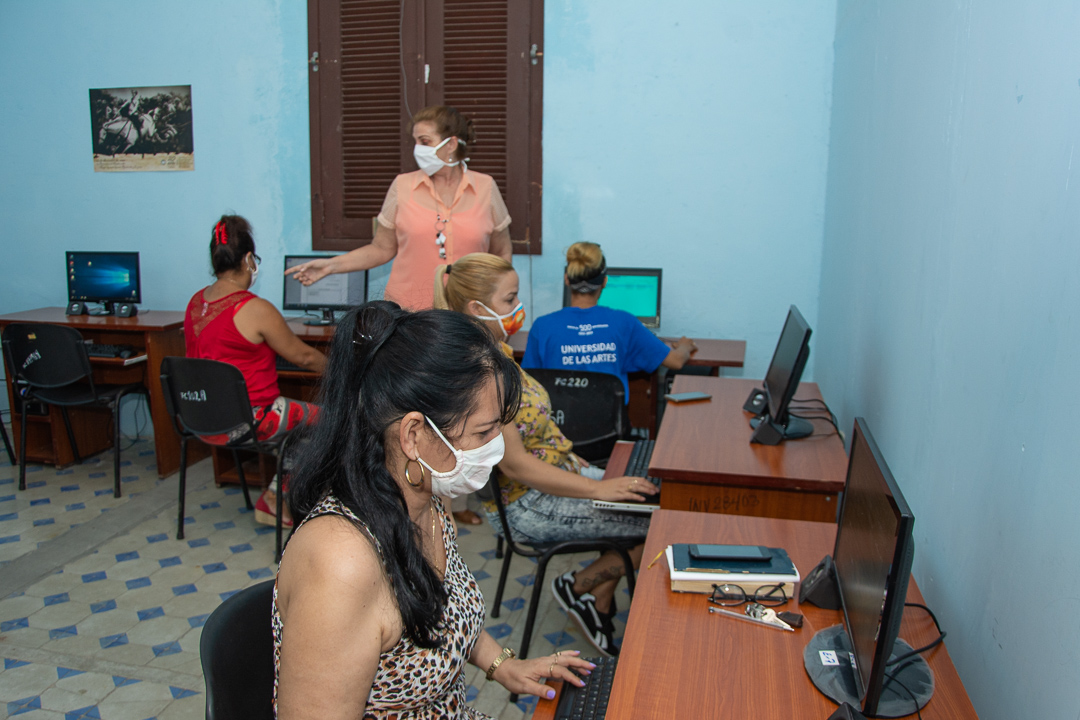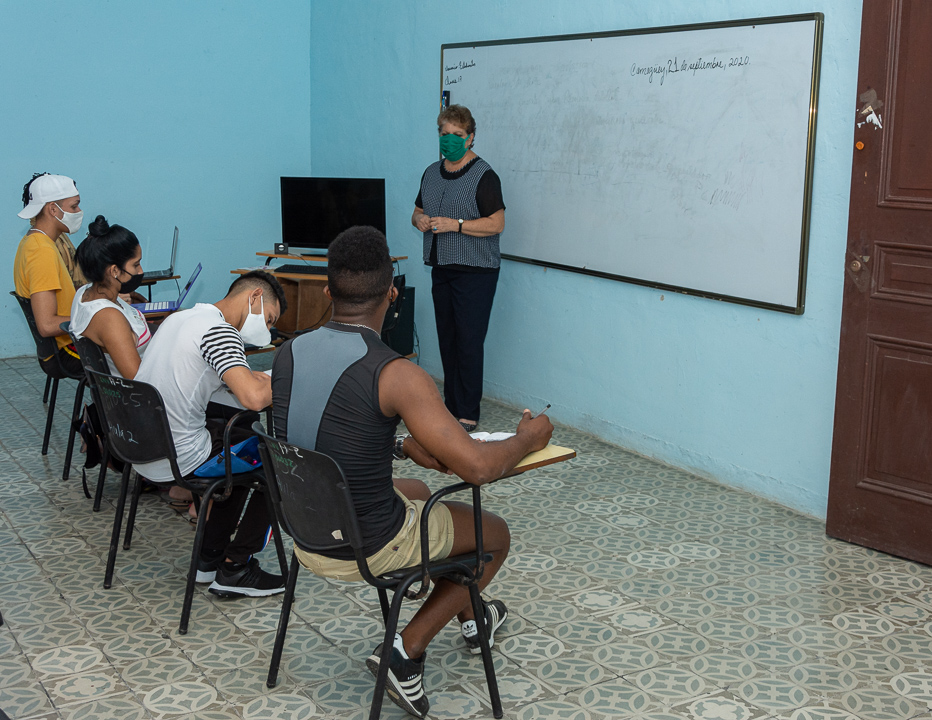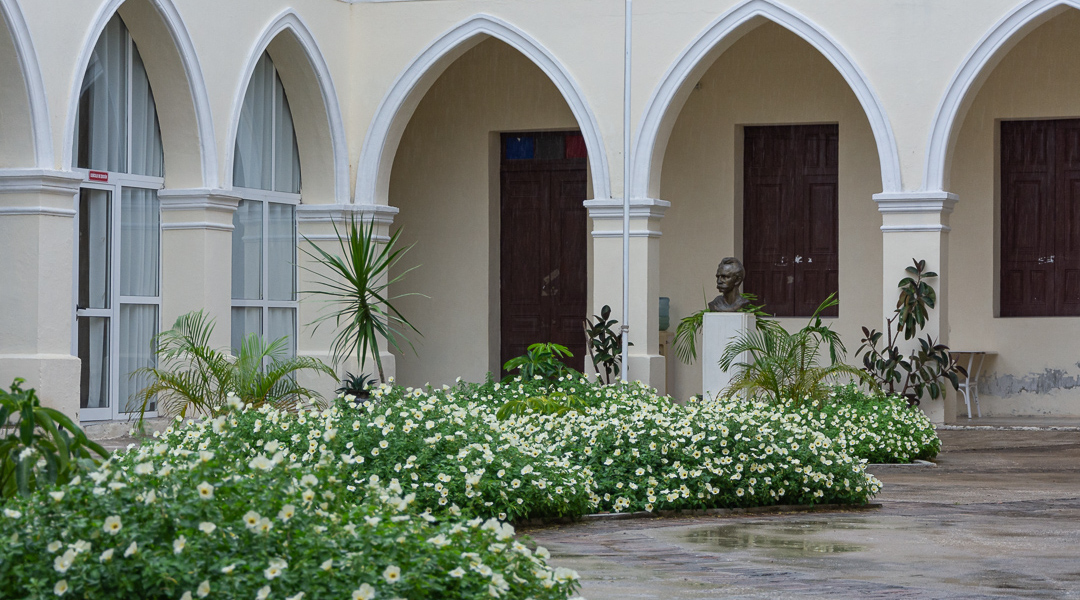CAMAGÜEY.- The senior level for artistic education in Camagüey opened on September 13, 1989. It functioned as a teaching unit with four guitar students. At present, it is a subsidiary with three careers and high goals.
Little by little, Music expanded its profiles with trombone, flute, viola, violin, piano, clarinet, double bass and saxophone. In 1990, the teacher Fernando Alonso constituted Arte Danzario, with ballet; and it was not until 2005 the incorporation of folk dance, thanks to Dr. Bárbara Balbuena. By that time, she has been for three years working on the Media of Arts and Audiovisual Communication.
TEACHING PROCESS
Deputy Director Elisa González Ugando assesses the effectiveness of the groups on WhatsApp, for student and teacher communication: "This is how we close down the course. Our students are responsible. They are eager to learn and come with a good foundation for their work. "
Also the teaching staff of Camagüey attends students from the regular course of the headquarters, media art, theater, drama, dance, heritage and conservation. They develop practices in cultural centers and receive tutoring from avant-garde artists, including Nazario Salazar.
"Students from the ISA in Havana will defend their work before our branch’s board of examiners. As for the admission for the next course, we are satisfied with the acquisitions for all the careers," she added.

STRATEGIC ALLIANCES
The inter-institutional link is key. An example can be seen with the Media Arts degree, connected to the Provincial Center of Cinema. From there they added two specialists to the faculty, Armando Pérez Padrón and Juan Antonio García Borrero.
Rebeca Burón, head of the Audiovisual Department, recognizes the link with Televisión Camagüey and Radio Cadena Agramonte, which opened their studies to university workshops.
"It is appropriate to highlight the stability of the teaching staff, which is also made up of graduates from the same career. This favors a greater specialization in direction, edition, production, sound and photography", she explains.
She relates the participation of young people in the events and their notable awards to the talent and quality of the learning, based on the management of the branch with workshops and conferences of outstanding personalities such as directors Alejandro Gil, Charlie Medina and Jorge Molina, screenwriters Amilcar Salatti and Eduardo Eimil, and film critic Gustavo Arcos and Orieta Cordeiro.

UNIVERSITY EXTENSION
Another strength of ISA here are its eleven artistic-pedagogical projects. Nine of them came out of the foundational career because of the importance of deepening the knowledge of Cuban music in schools and in the community.
"Since its emergence, our affiliate has developed a broad movement in university extension," says coordinator Silvia Campbell. She mentions in particular the Excorde project, led by pianist Lourdes Cepero with didactic concerts for the Renato Guitart elementary school; with Con tumbao and Bel canto, which offer tools for appreciation in the "Martha Abreu" School, of the same teaching level.
Likewise, she highlighted the project with a gender focus Mundo A, founded by the director Mayra González Aróstegui, with its plastic arts actions with the children of the Plaza del Carmen together with Martha Jiménez.
"The honorary investigation groups: Alejo Carpentier, Fernando Alonso, José Antonio Aponte, Aurelia Castillo and Enrique José Varona are still working. Their members continue with different investigations from the distance", she said.
DIFFERENT LEARNING
Principal María Antonieta Ríoseco on behalf of her team shares the aspiration of opening the regular day course in the three careers: "Another goal is the internet service for teaching. We depend on Etecsa.
Also pending is the editing and sound cubicle for Media Arts. We are pleased to have as teaching units the Ballet of Camagüey and the Folkloric Ballet, and to have a specialized classroom in the Caonao Recording Studio".
From the emphasized promotions the significance of the 328 graduates of the central-eastern area, and the 854 graduates of postgraduate training, which contributed the seven editions of the Master of Latin American Culture. Currently, the Master's Degree in Cultural Heritage is in process, coordinated by Dr. Luis Alvarez in close connection with the Office of the Historian of the City and the University of Camagüey.
"Already with the Plan E, the curricular designs are directed to the semi-present modality. A greater part of the teaching load is established to the self-management of knowledge, to the participative teaching. The classes are practical, in a field where the student's creativity must prevail," The Principal concludes.
Translated by Mariam Heredia(Student)
Reviewed by Linet Acuña Quilez



